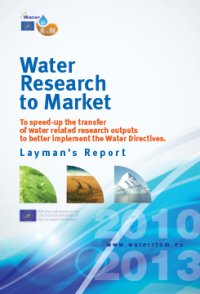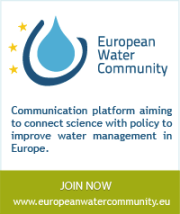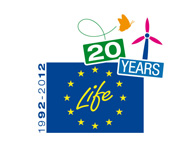INGEZHA
| Output characterisation | |
| OUTPUT SENTENCE | Ecological engineering of Artificial Wetlands to limit transfers of pollutants of agricultural origin. |
| OUTPUT TYPE | methodology |
| WATER TOPIC | Agricultural pollution |
| KEYWORDS | Artificial Wetlands |
| KEYWORDS TYPE | pollutants transfer |
| MARKET NEED TAILORED | This methodology will help to adequatly design artificial wetlands to limit agricultural pollutants transfer. |
| OUTPUT DESCRIPTION | The objective of this project is to contribute to ecological engineering artificial wetlands (ponds, planted ponds, lagoons ...) in order to better understand the relationship between the floristic diversity of these areas, features purifying communities (macrophytes, microalgae , microinvertebrate, zoobenthos, etc..) and the fate of pollutants from agriculture (ex: nitrates). |
| STATE OF DEVELOPMENT | No information found. |
| INNOVATIVE ASPECTS AND ADVANTAGES | Agricultural pollutants are difficult to control or to trap. Wetlands, natural or artificial, present the advantage to be situated in the watershed low lands where the water will necessary pass. And we are almost certain that the majority of agricultural pollutants can be limited or blocked by those ecosystems. |
| INTELLECTUAL/INDUSTRIAL PROPERTY RIGHTS | No information found. |
| TRANSFERABILITY | This methodology will be useful in all of the watershed across european countries. |
| POTENTIAL USERS/CLIENTS | National, regional or local authorities in charge of water quality in aquatic ecosystems. |
| Estimation of risks | |
| INNOVATIVE DISADVANTAGE | High level of technicity. |
| EVALUATION OF RISKS FOR OUTPUT USERS | Users must be familiar with ecological engineering and civil engineering. |
| ECONOMICAL RISKS | High risks. |
| TECHNICAL RISKS | High risks. |
| MARKET RISKS | Medium risks. |
| SOCIAL RISKS | Low risks. |
| Steps ahead | |
| NEXT STEPS TO ACHIEVE THE STATUS 'READY TO USE' | To reach a "ready to use" level, it is necessary to develop guidelines. |
| INVOLVEMENT OF THE OWNER FOR THE NEXT STEPS | Not defined. |
| TYPE OF PARTNER FOR THE NEXT DEVELOPMENTS | Not defined. |
| TASKS TO BE PERFORMED | Development of guidelines. |
| COLLABORATION DETAILS | Acceptability by authorities in charge of surface waters. |
| Estimation of ressources | |
| RESOURCES FOR NEXT STEPS | Investments in guidelines definition and writing. |
| FORESEEN COSTS FOR NEXT STEPS | No vision on foreseen costs. |
| Contact | |
| TECHNICAL CONTACT | Bénédicte Augeard |
| COUNTRY | FRANCE |
| WEBSITE | http://www.pseau.org/outils/ouvrages/irstea_amenager_des_zones_humides_pour_epurer_les_eaux_agricoles_quels_enseignements_tirer_de_l_existant_2008.pdf |
| WATER RTOM CONTACT | OIEau |
| Background | |
| PROJECT NAME | INGénierie Ecologique des Zones Humides Artificielles pour limiter les transferts de polluants d'origine agricole |
| PROJECT ACRONYM | INGEZHA |
| PROJECT DESCRIPTION | The objective of this project is to contribute to ecological engineering artificial wetlands (ponds, planted ponds, lagoons ...) in order to better understand the relationship between the floristic diversity of these areas, features purifying communities (macrophytes, microalgae , microinvertebrate, zoobenthos, etc..) and the fate of pollutants from agriculture (ex: nitrates). |
| LEADER | CEMAGREF UR HBAN |
| TEAMS INVOLVED | Cemagref UR HBAN, UMR Sisyphe, UMR Bioemco, UMR INRA-Agrocampus-Rennes EQHC |
| COUNTRIES INVOLVED | France |
| PROJECT LOCATION | France |
| FUNDING ORGANISATION | CNRS |




